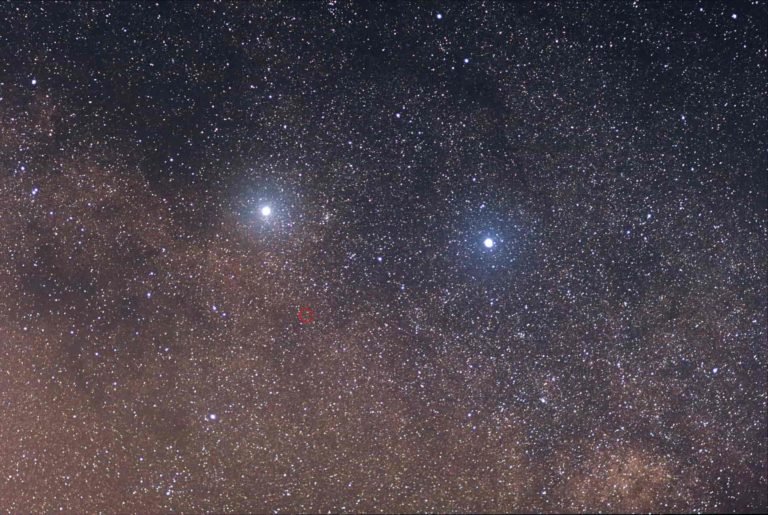This paper by Kervella et al. mainly discusses how using the HARPS high-precision absolute radial velocity measurements and revising the parameters of the α Centauri pairs (radial velocity, luminosity, mass, etc.), the researchers feel confident to say that the closest star to us, Proxima Centauri, is gravitationally bound to two other stars Alpha Centauri A and Alpha Centauri B, forming a system of three stars. The results are also important to investigate the formation and composition of the newly found exoplanet of the Proxima. Since the discovery of Proxima Centauri, astronomers were speculating whether the three stars are gravitationally bound or not but were not able to conclude due to lack of precise data of Proxima’s radial velocity.
The only way we can measure Proxima’s radial velocity is by observing the Doppler Shift in the light coming from it. However, the faintness of the star makes it difficult to get the precise measurement. Finally, this team used modern spectrographs designed for the detection of exoplanets to come to a precise measurement of the radial velocity of the Proxima and the Alpha Centauri. However, their measurements are subject to two major systematic errors i.e., convective blueshift and gravitational redshift.
Convective blueshift is the doppler shift that happens due to the movement of stars surface. The surface (source of light) is constantly rising and sinking, the star appears to move towards us and hence the blueshift occurs. However, the convective shift for the Alpha Centauri can be calculated while it can be neglected for Proxima because of its faintness.
Another factor is the gravitational shift that happens when the photon is pulled down by the gravity of the star which makes the star appear as if it is receding from us. Because the mass of the Proxima is not measured directly we cannot calculate the resulting redshift. However, we can predict the redshift based on the mass of the similar stars of whose mass we know.
After considering all the factors in the measurements, the team found that the relative radial velocity of the Proxima(293m/s) is lower than the escape velocity (545m/s). They considered the Alpha A and B as one system because of their proximity compared to Proxima. The measurements show that the three stars are gravitationally bound and Proxima orbits Alpha Centauri once in about 600,000 years.
Original paper:
https://ui.adsabs.harvard.edu/abs/2017A%26A…598L…7K/abstract
Was this summary helpful?
Mention in the comments below.
Do not forget to check our other research summaries and general blog posts.










